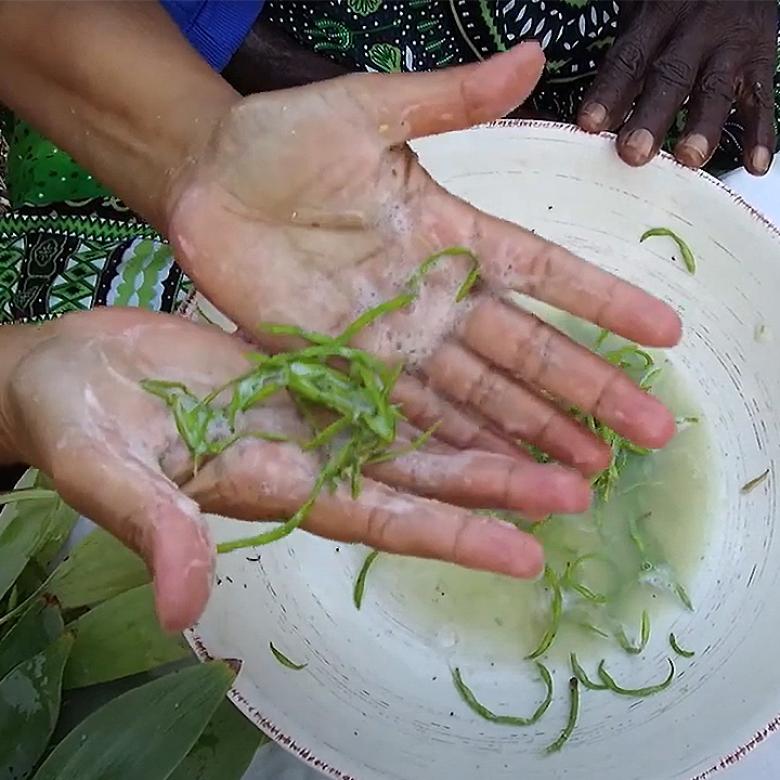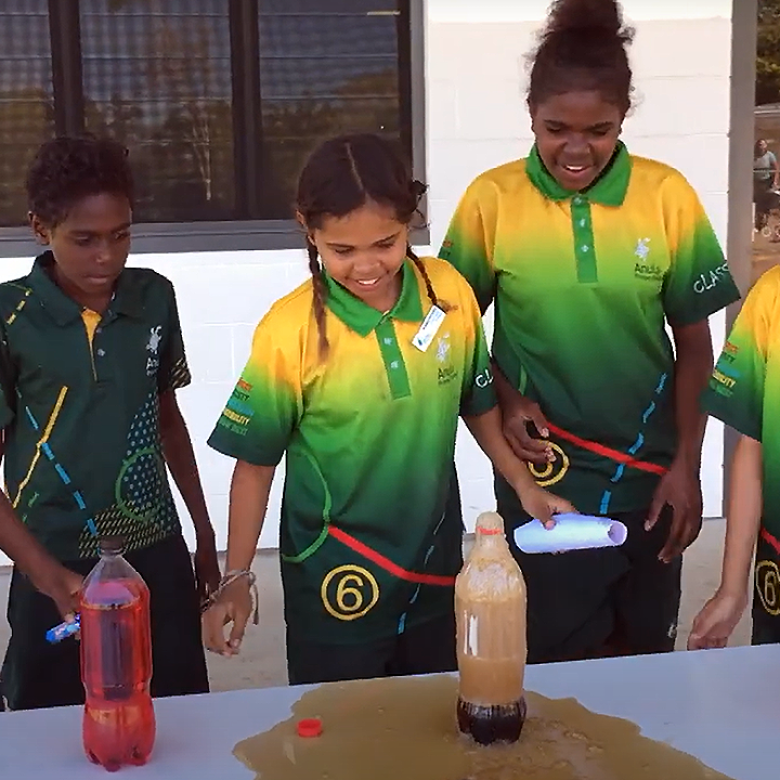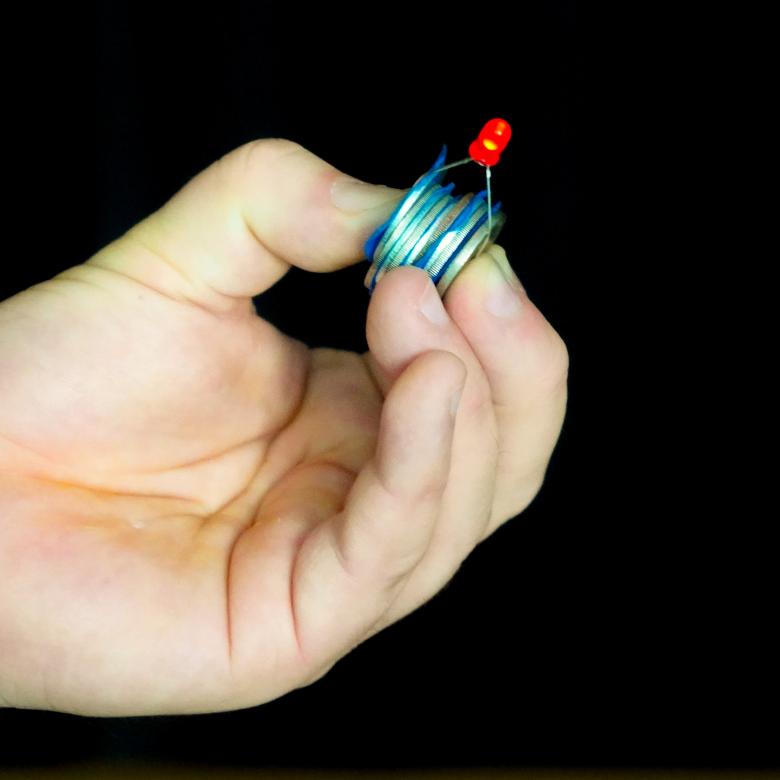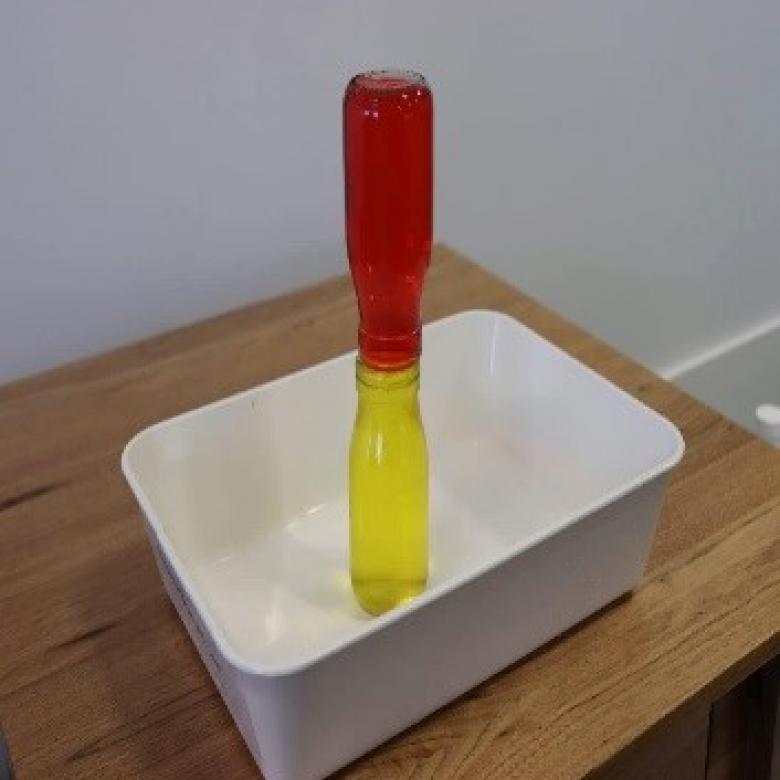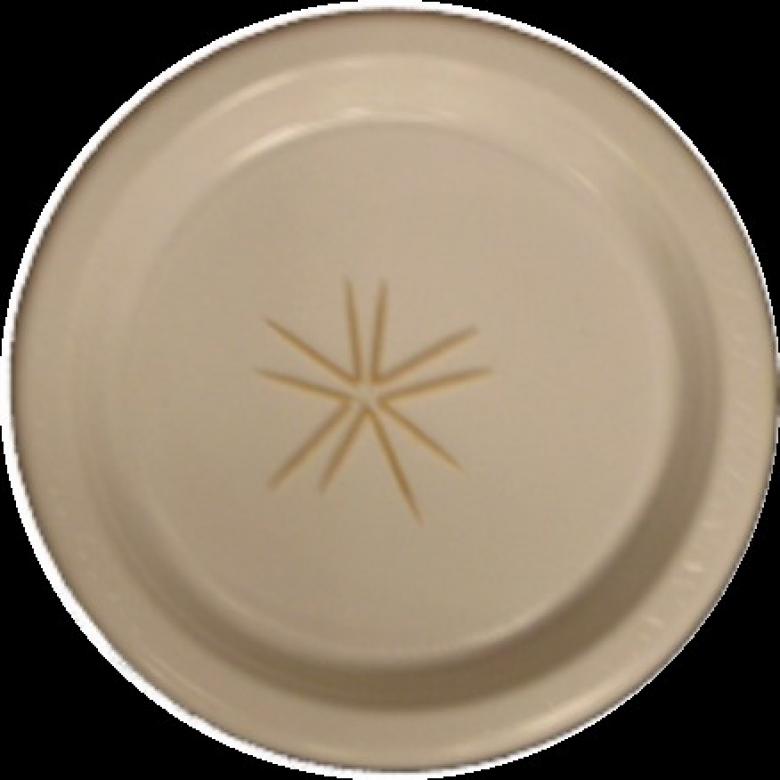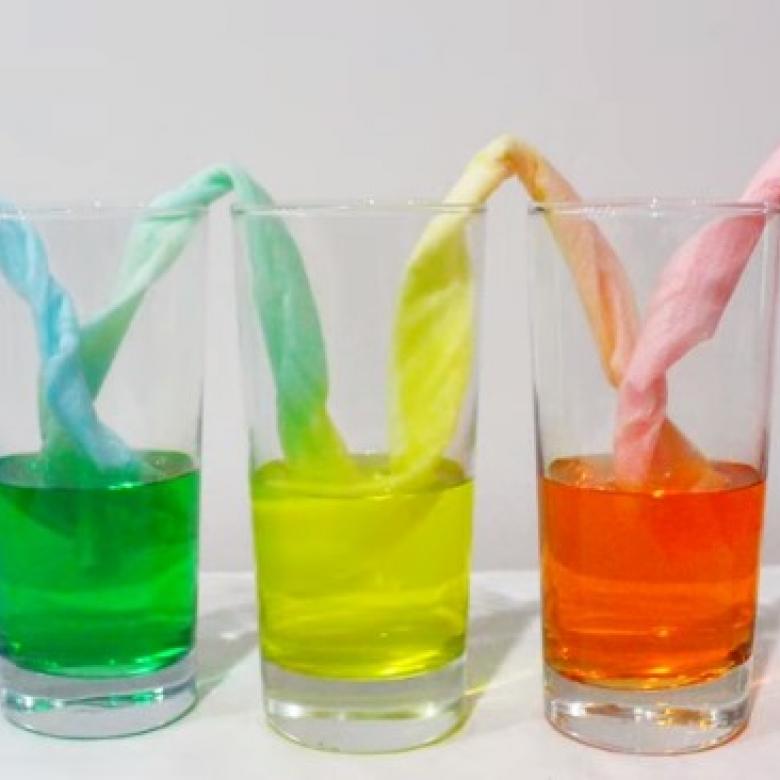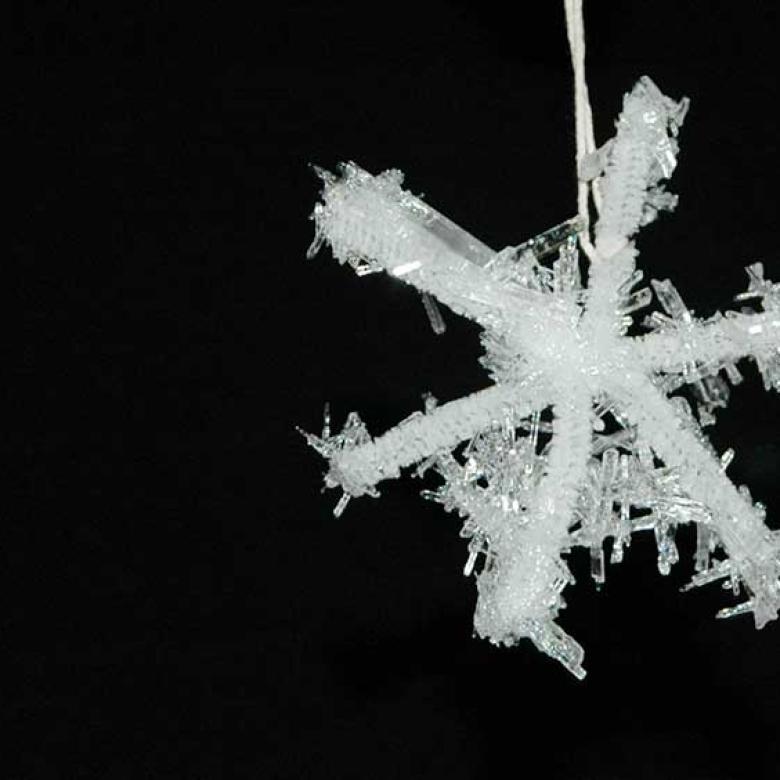You’ll need
- A tall plastic cup
- Water
- White vinegar
- Food colouring
- Cooking oil
- Bicarbonate of soda (also called bicarb soda and sodium bicarbonate)
What to do
- Gather your materials on a flat surface.
- Pour water into the plastic cup until it is one-quarter full.
- Pour vinegar into the cup until it is half full.
- Add a few drops of food colouring.
- Gently swirl the water in the cup to mix in the food colouring.
- Carefully pour in oil so it sits on top of the water and vinegar, filling the cup to about 1 cm from the top.
- Sprinkle about 1 teaspoon of bicarbonate of soda on top of the oil. Wait a few seconds, then sprinkle another teaspoon of bicarbonate of soda on top. Watch what happens.
Questions to ask
What do you think the bicarbonate of soda is reacting with? Try the experiment again, except without the vinegar. Does it still work?
Why doesn’t the oil change colour like the water and vinegar mixture?
What's happening
Oil and water really don’t like each other. They don’t want to mix. But water, vinegar and food colouring like each other just fine, so they do mix together. When you add oil to the cup, 2 layers form. The water, food colouring and vinegar mixture is on the bottom and the oil rests on top. The oil sits on top because it is less dense than water and vinegar.
The bicarbonate of soda reacts with the vinegar in the water, producing bubbles of carbon dioxide (also written by its chemical formula CO2) gas. Carbon dioxide is less dense than both the water mixture and the oil, so it rises up through both liquids. When a gas bubble passes from the water into the oil, it pulls a small amount of water with it. When the bubble reaches the surface of the oil and pops, the water falls back through the oil to the watery layer.
Did you know
Most effervescent (fizzy) tablets (like Berocca or Alka-Seltzer tablets) contain sodium bicarbonate and citric acid. When you drop one into water, you get an acid–base reaction. It’s like the reaction between bicarbonate of soda and vinegar. You can actually make a lava lamp using an Alka-Seltzer tablet instead of vinegar and bicarbonate of soda.
When you drop an Alka-Seltzer tablet into water, the citric acid reacts with sodium bicarbonate. It then forms water, a salt and bubbles of carbon dioxide gas. We can write this out as a chemical equation:
citric acid + sodium bicarbonate → sodium citrate + carbon dioxide gas + water
If using chemical formulas, it looks like this:
C6H8O7 + 3NaHCO3 → Na3C6H5O7 + 3CO2 (g) + 3H2O
(C is carbon, H is hydrogen, O is oxygen and Na is sodium. The g means gas.)
When the tablet hits the water it starts to fizz. Why don’t the citric acid and sodium bicarbonate react when the tablet is dry? Well, for the 2 chemicals to react they need to run into each other. When they are in a solid, dry tablet, the sodium bicarbonate and citric acid are basically stuck in place. When you drop the tablet into water, it starts to dissolve. The sodium bicarbonate and citric acid go into the water, where they can then move around more easily. This lets them come into contact and react.
Tim: Hi everyone, my name’s Tim, I’m from the Questacon Science Squad and I’m going to show you how to make your very own lava lamp.
(Camera pans to the table).
You need:
- a plastic cup which is filled to about a quarter of the way with water
- some cooking oil
- some white vinegar
- some green food colouring and
- some bi-carb soda.
Once you have these things, you can take the vinegar and pour vinegar up to about halfway in the cup here. Pour it straight into the water.
(Tim pours vinegar into the cup of water).
And then take a splash of the green food dye, pour that in. There we go. Give it a good mix around.
(Tim splashes some dye in and then shakes the cup).
And pour oil on top until it reaches pretty close to the top.
(Tim pours oil into the cup).
So now the thing, all you have to do is take out some of the bi-carb of soda and sprinkle it on top of the oil.
(Tim sprinkles bi-carb in to the cup with a spoon).
Sprinkle a little bit more here as well.
(Tim sprinkles some more bi-carb soda into the cup).
And you can watch it bubble away.
(Camera zooms into the lava lamp).
If you want to find out how this lava lamp works head to the Questacon Science Squad website. See you next time.


